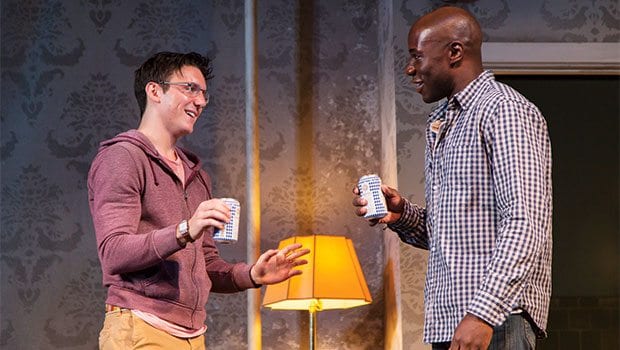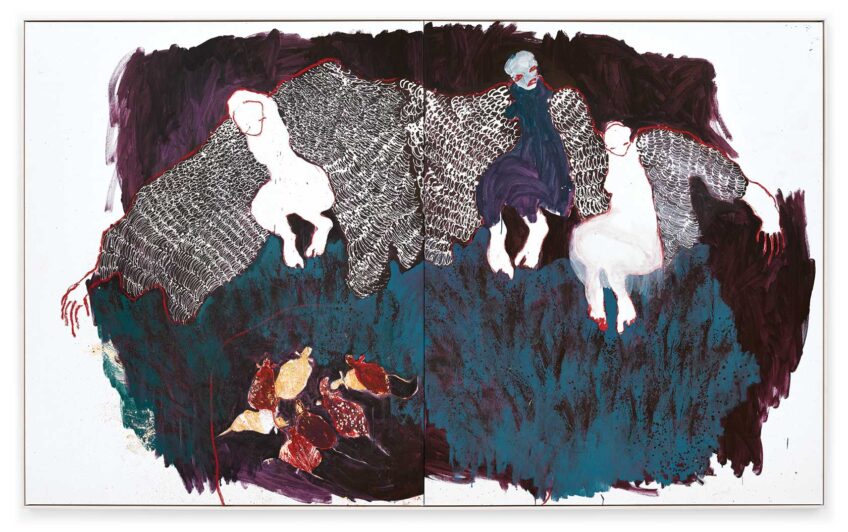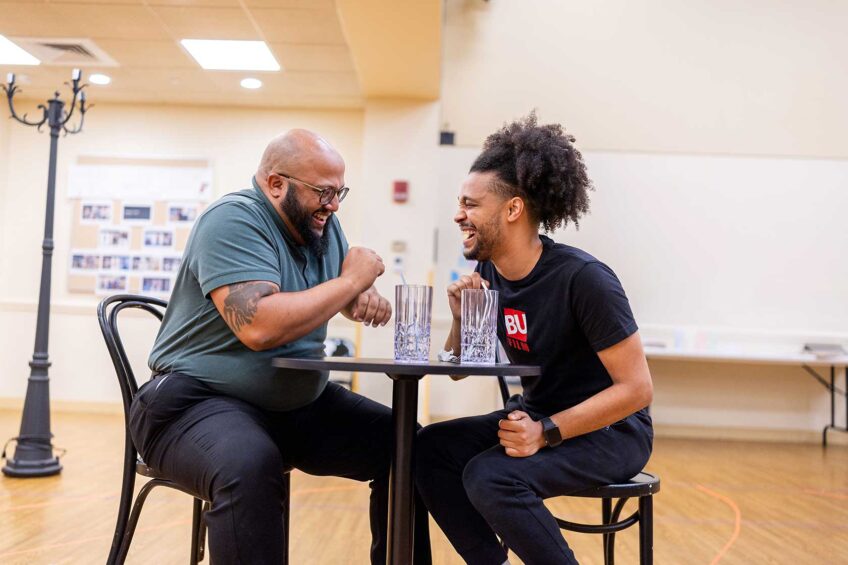
The word “friend” comes up often in the dialogue between Jeremy and Teddy, the main characters in “A Guide for the Homesick,” on stage through November 4 in a world premier production by Huntington Theatre Company at the Calderwood Pavilion of the Boston Center for the Arts.
On the Web
For more information about “A Guide for the
Homesick,” visit: www.huntingtontheatre.org/season/2017-2018/a-guide-for-the-homesick
Yet friendship eludes these men, despite what they have in common: Both were raised in Boston and both are on the run from painful memories. Each believes he has betrayed a close friend in a time of dire need.
Written by Huntington Playwriting Fellow Ken Urban, who also is head of the playwriting program at Massachusetts Institute of Technology, and directed by Tony Award nominee Colman Domingo, the drama follows their one-night encounter in a shabby hotel room in Amsterdam. Roxbury native Teddy, a financial services professional, is in town for an impromptu vacation from his job in New York City. Jeremy, a recent Harvard graduate and scion of a Jewish family in Newton, is en route home after six months serving at a community health clinic in East Africa.
After meeting in a bar, they go up to Teddy’s room, at first for companionship and a few rounds of beer. The actors rely a lot on body language that at times seems contrived. Jeremy displays more than his share of tics as a closeted gay man. As he welcomes his guest, inviting him to stay a while and feel at home, Teddy moves with a touch of swagger, a man sure of his charms despite his own burden of secrets.
Animating this intensely performed production, which runs 75 minutes without intermission, is its simmering tension, clever staging, touches of humor and, above all, ardent performances by McKinley Belcher III as Teddy and Samuel H. Levine as Jeremy.
Something of a psychodrama, with little plot, this play relies on its actors, and they deliver. Thursday night, Belcher and Levine earned a standing ovation for the energy and conviction they brought to their strenuous roles.
Belcher’s Teddy is by far the more sympathetic character, a warm extrovert with a knack for empathy. Teddy tells Jeremy how he encouraged his young friend Ed, who was anxious about his upcoming marriage, by saying, “You got the girl. You’re getting a life.” When Jeremy admits that he may be gay, Teddy urges him to come out and “be part of a community.”
As the men feel each other out, their interaction turns into an approach-avoidance game that alternates between sparring and seduction, a game that after a while becomes tiresome to watch.
The play gains momentum as, with deft staging and versatile acting, scenes shift between their present and the past, giving both equal reality. Chameleon-like, Belcher morphs into the effusive Nicholas, Ed’s friend back in Uganda, who has taken a gay lover, a relationship that is taboo in his Ugandan community. And Levine entirely embodies fragile, wired-up Ed. Freed from playing men intent on hiding themselves, the actors become characters the audience can care about.
Scenes switch from Teddy and Jeremy in the hotel room to the Ugandan clinic, where Jeremy advises a frantic Nicholas, and to Teddy bullying Ed as he succumbs to a manic-depressive fit.
This mingling of past and present deepens the play. And by casting the actors as the friends of Nicholas and Ed, the production adds nuance to the pull between the two men, who see in each other the friends they have betrayed.
Although the cues preceding each switch to the past are a bit hokey — light bulbs flicker to an ominous rumble — the production’s artful staging conjures settings that vary from a dreary hotel room to an Ugandan landscape and heighten the emotional tenor of each scene. William Boles designed the sets, with lighting by Russell H. Champa and costumes by Kara Harmon. Sound design by Lindsay Jones turns the insistent ring of a cell phone into an urgent motif and in this production, the beat of rain on a roof, often soothing to the ear, becomes a pitiless downpour.
“A Guide for the Homesick” offers a lesson with a sting: The homecoming of friendship eludes people who are not at home with themselves. Lacking self-knowledge, Urban’s characters wreak havoc on themselves and others. Theirs is a story as old as the tale of Oedipus, the king who, blind to himself, destroys those he holds dearest.






